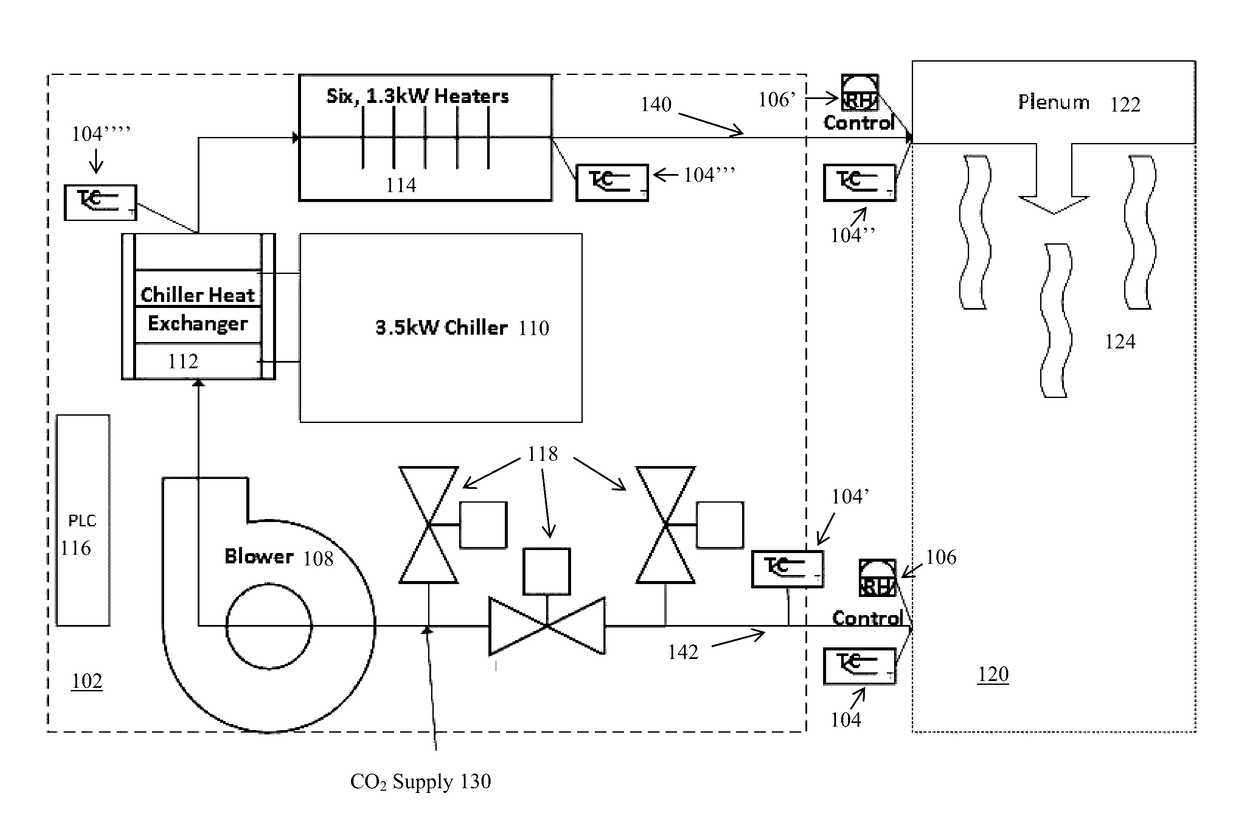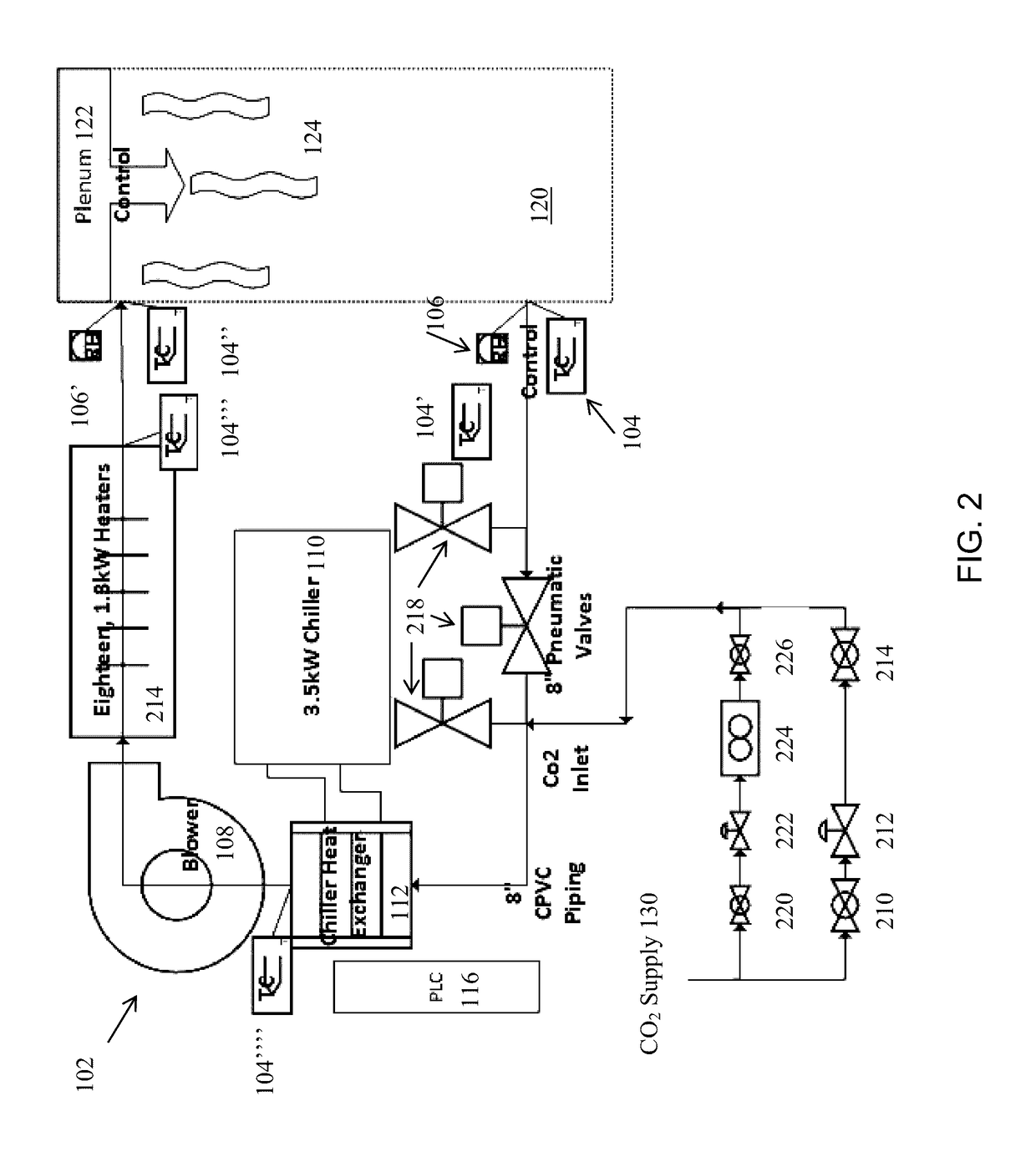Curing-drying model and its applications
a technology of composite materials and models, applied in the direction of ceramicware, process and machine control, instruments, etc., can solve the problems of the inability to control the curing process, the inability to operate in the correct position, and the inability to meet the requirements of the curing process
- Summary
- Abstract
- Description
- Claims
- Application Information
AI Technical Summary
Benefits of technology
Problems solved by technology
Method used
Image
Examples
Embodiment Construction
Solidia Drying-Curing Mathematical Model
[0117]This invention relates to the drying / curing model pertaining to carbonation of non-hydraulic cement (e.g., cement that is not cured by the consumption of water in a chemical reaction, but rather is cured by reaction with carbon dioxide, CO2, in any of its forms, such as, by way of example, gaseous CO2, CO2 in the form of carbonic acid, H2CO3, or in other forms that permit the reaction of CO2 with the non-hydraulic cement material).
[0118]Water removal in the drying process has two regimes, constant drying rate period (i.e., capillary flow) followed by a falling rate time period (i.e., water vapor diffusion).
[0119]Larger pores are opened up wide during capillary flow but not so for small pores, CO2 can penetrate the small distance in a matter of minutes in the small pores in the size of a few hundred micrometers. In addition, capillary flow is a much faster process than the water vapor diffusion process. The drying / curing model developed i...
PUM
| Property | Measurement | Unit |
|---|---|---|
| temperature | aaaaa | aaaaa |
| size | aaaaa | aaaaa |
| pressure | aaaaa | aaaaa |
Abstract
Description
Claims
Application Information
 Login to View More
Login to View More - R&D
- Intellectual Property
- Life Sciences
- Materials
- Tech Scout
- Unparalleled Data Quality
- Higher Quality Content
- 60% Fewer Hallucinations
Browse by: Latest US Patents, China's latest patents, Technical Efficacy Thesaurus, Application Domain, Technology Topic, Popular Technical Reports.
© 2025 PatSnap. All rights reserved.Legal|Privacy policy|Modern Slavery Act Transparency Statement|Sitemap|About US| Contact US: help@patsnap.com



